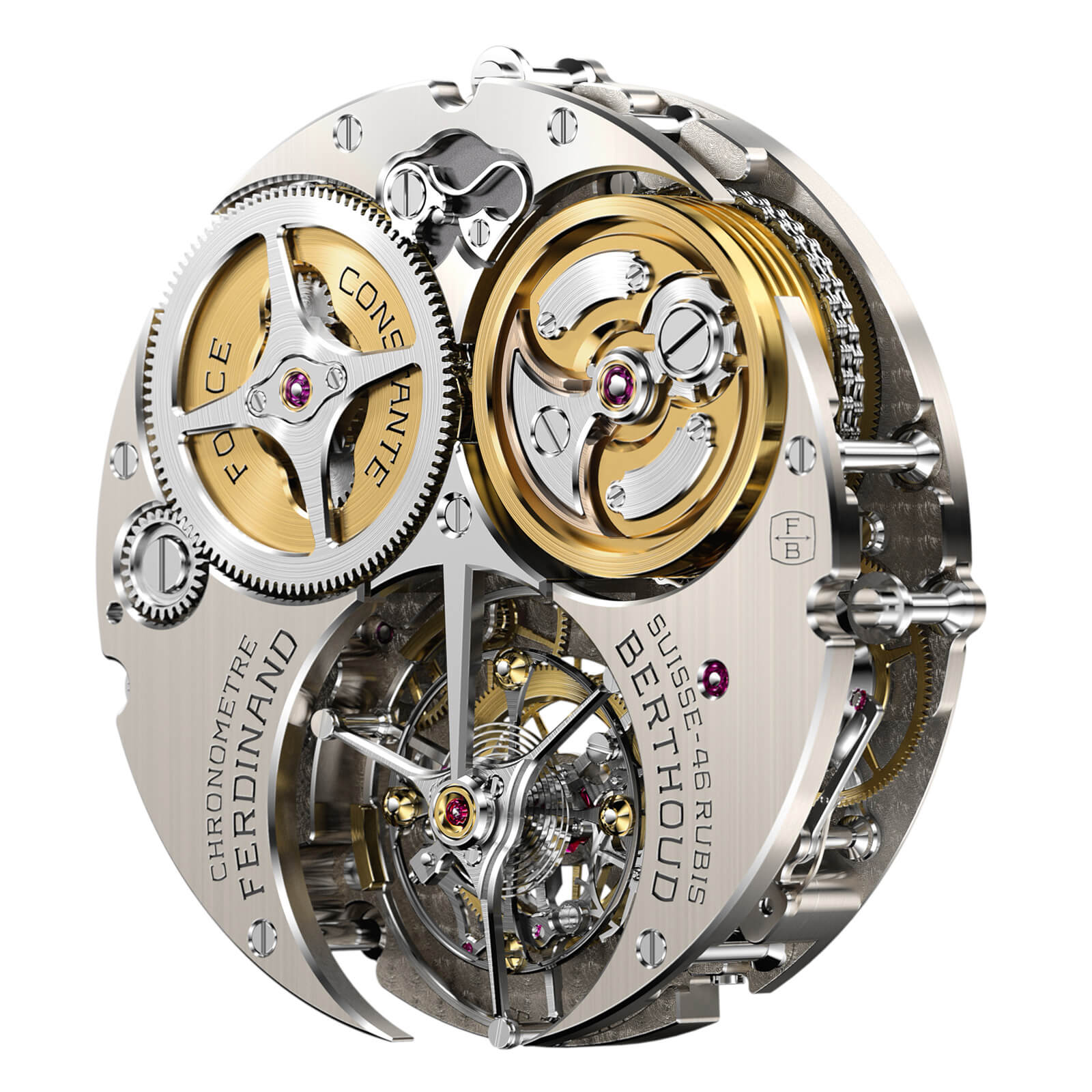When the co-president of Chopard has set his mind on something, it’s only a matter of time before he succeeds. The Maison’s transition from brand to fine watch Manufacture speaks volumes about the ambitions that drive him. Leaving grand gestures to others, and with a tenacity bordering on stubbornness, Karl-Friedrich Scheufele knows how to forge the destiny of a brand. Next to benefit will doubtless be Ferdinand Berthoud, a name that recently reappeared on the scene. The introductions were made in September when the brand’s executives unveiled FB1, the first watch to bear the Ferdinand Berthoud name, at an event in Paris. This was an appropriate choice, given that when Berthoud left his native Switzerland and Val-de-Travers, it was to set up in the French capital. Here, he earned the respect of both his peers and crowned heads, while his marine chronometers would help guide navigators across the oceans.
Ferdinand Berthoud was just eighteen years old when he arrived in the City of Light, in 1745. His talent shone through, earning him the title of master watchmaker at barely 26 years of age. Some seven years later, he published his first academic treatise, L’art de conduire et de régler les pendules et les montres (the art of operating and adjusting clocks and watches). Such expertise was soon to find a suitably grand outlet: this was the age of scientific explorations, yet navalkind still lacked a reliable means of calculating longitude, something which could only be achieved by means of a marine chronometer that would keep accurate time in all conditions. Berthoud, like Pierre Le Roy in France, or George Graham and Thomas Mudge in England, set about tackling the problem.
Chopard in the shadows
The need for an instrument capable of keeping time accurately at high sea was so blatant that the British Parliament passed the Longitude Act to reward whomever was able to produce a suitably precise chronometer. Although the prize ultimately went to John Harrison in 1773, Ferdinand Berthoud’s ingenuity in designing marine clocks, as well as pocket watches and regulators, earned him a reputation of the highest order. His understanding of time measurement, which he set out in a number of books, opened the doors to the Royal Society of London where he was elected an “overseas associate fellow,” a rare distinction. In 1770 he was named Horologist by appointment to King Louis XV. Further honour came when Napoleon made him a Knight of the Légion d’Honneur in 1804, three years before his death.
Once Karl-Friedrich Scheufele began scouring the world of antique timepieces, in preparation for the opening of the Luceum, which is Manufacture Chopard’s museum in Fleurier, Switzerland, it was only a matter of time before he came across Ferdinand Berthoud, and was immediately hooked. And so when in 2006 he learned that the watchmaker’s name was for sale, he didn’t hesitate a second. News of the acquisition didn’t stay secret for long, and the rumour mill began to turn as to what projects this admirer of finely crafted mechanics might be planning. Particularly as the years passed and there was still no “Ferdinand Berthoud by Chopard” in sight. As always, Scheufele was clear about his intentions and determined to take however long was necessary to bring his ideas to fruition, with excellence as his sole motivation. If a Ferdinand Berthoud watch were to see the light of day, it would be under the watchmaker’s name alone, with its own people and an approach to watchmaking that would be different to that of Chopard. And so a small team of movement developers, watchmakers, designer and marketeer were tasked with reviving the Berthoud spirit in contemporary timepieces. It is, of course, unlikely that any such watch could have existed without Chopard. In this instance, however, the Manufacture has stayed very much in the shadows.
Four patents pending for the FB1
“We asked ourselves what Ferdinand Berthoud would have been making, had he lived in our century,” creative director Guy Bove declared. “This meant exploring his skill as an engineer and drawing on his expertise, which was widely acknowledged in his day, in developing marine chronometers. Put simply, we set out to produce a mechanism that would be both technical and elegant, that would be precise, given that it meets COSC requirements, and without extreme complications, something we reserve for L.U.C movements.” FB1 is all these things: a timepiece that captures the spirit and watchmaking architecture of the Enlightenment. The octagonal case has four watertight portholes in its side; the round dial has a satin finish to accentuate its handcrafted style. Attention to detail is such that a special font has been created, exclusively for Ferdinand Berthoud.
The movement features a pillar construction with a suspended fusee and chain transmission, a first ever, in keeping with the calibres of that period. The 1,120 components, 800 of which for the chain alone, drive the hour and minute hands on an offset dial. Seconds are displayed by a central hand, as they would be on an historic regulator. The power-reserve indicator at 9 o’clock combines a cone with a feeler spindle, a typical feature of seventeenth-century German watchmaking. An opening in the centre of the dial offers a clear view of the tourbillon with its large balance wheel. Four patents have been filed for this hand-wound FB-T.FC movement, which took three years to develop. One hundred FB1 watches will be made in white gold or rose gold, at a rate of twenty per year. Worldwide, eight specialist retailers have been selected, none of which have connections with Chopard. The question being, will they actually have an FB1 to sell? The first watches will be delivered in time for Christmas and the entire production has been reserved. It may be another two years, and the FB2, before the 21st-century Ferdinand Berthoud makes it into a store window.



















